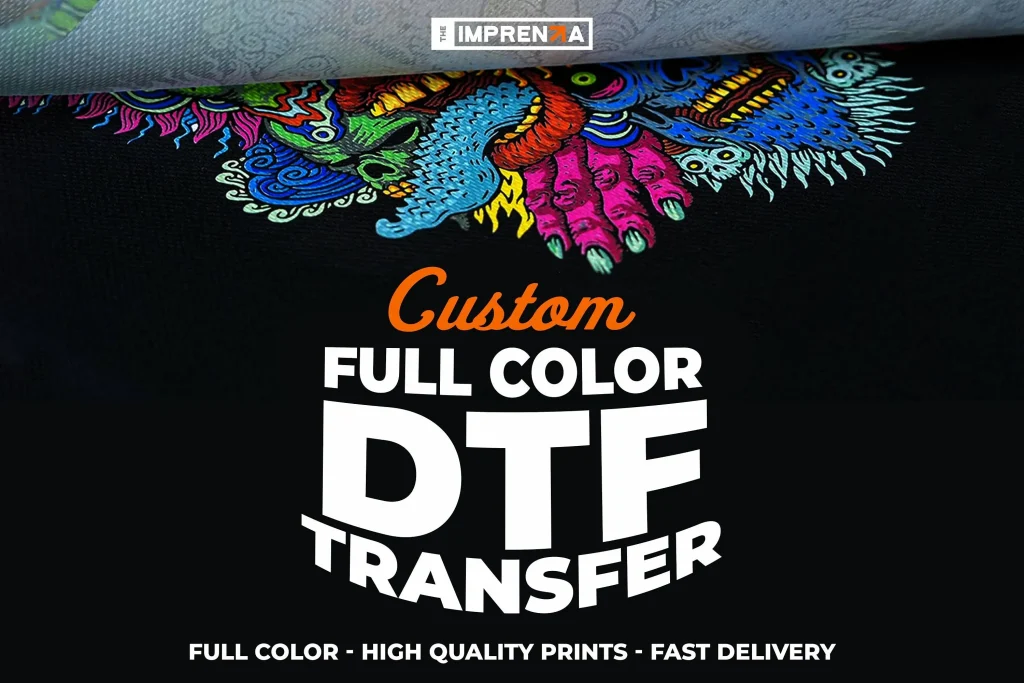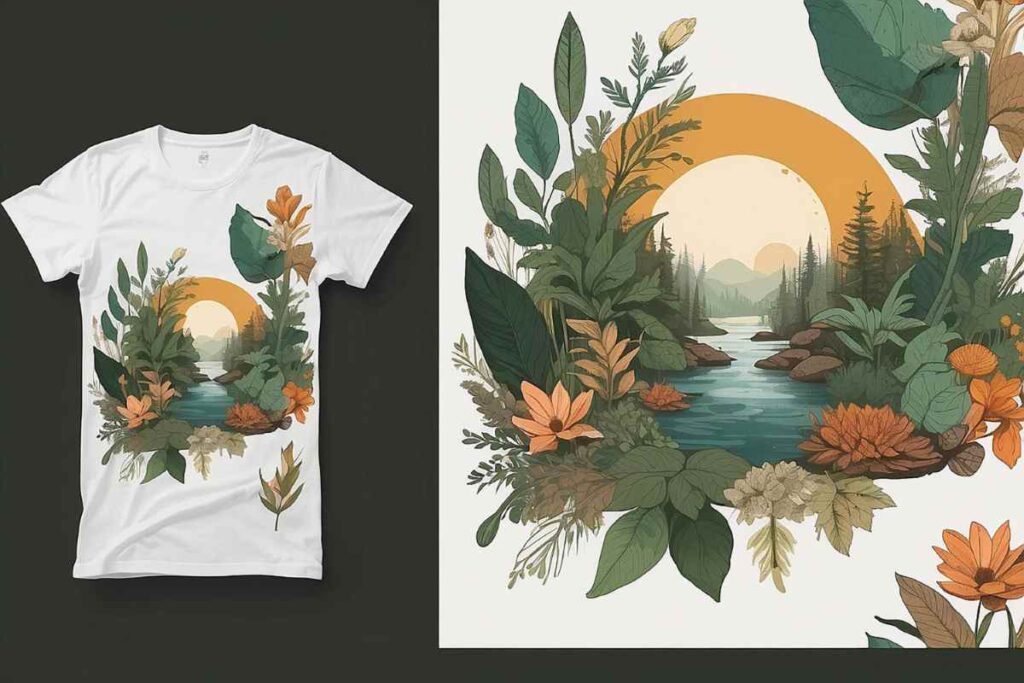DTF Transfers have emerged as a transformative force in the realm of custom apparel printing, combining innovation with practicality. As a method rooted in Direct to Film printing technology, DTF transfers enable designers to create vibrant, high-quality images on a wide variety of fabrics. This cutting-edge approach not only enhances print durability and flexibility but also offers significant DTF printing advantages over traditional methods like screen printing. In an era where consumers demand personalized apparel, understanding the nuances of DTF printing technology is essential for both businesses and customers alike. As we explore this advanced printing technique, we will uncover its numerous benefits and its potential to reshape the future of fashion.
In the dynamic landscape of personalized garment production, Direct to Film (DTF) printing stands out as a revolutionary technique. Known for its ability to create rich and lasting designs, this approach to textile printing has gained recognition for its versatility across different materials and types of apparel. As the industry embraces sustainable printing methods, DTF printing technology aligns perfectly, offering eco-friendly solutions that cater to consumer preferences. With the ability to produce high-quality prints without the constraints of traditional methods, DTF has become a game-changer in the realm of custom textile reproduction. This innovative printing method not only meets the growing demand for customization but also sets new standards for quality and efficiency in the printing sector.
Exploring the Versatility of DTF Transfers
DTF transfers stand out for their incredible versatility, allowing for high-quality prints on a variety of fabrics. Unlike traditional printing methods such as screen printing, which often require specific materials, DTF technology seamlessly adapts to both light and dark textiles. This flexibility means that businesses can cater to an extensive range of products—everything from custom t-shirts to athletic wear and promotional items—without compromising on quality. Furthermore, DTF printing eliminates the need for pre-treatment on fabrics, streamlining the printing process and increasing efficiency.
The adaptability of DTF transfers also opens up new avenues for customization. Companies can produce personalized items in smaller batches, meeting the growing consumer demand for unique products. This approach not only enhances brand loyalty but also allows businesses to respond swiftly to emerging fashion trends. With DTF printing, the possibilities are endless; designers can explore intricate patterns, vibrant colors, and various material combinations without the constraints typically associated with other printing techniques.
Cost-Effectiveness of DTF Printing
One of the most significant advantages of DTF printing is its cost-effectiveness, particularly for small businesses and startups. Traditional printing methods, such as screen printing, often necessitate large minimum orders due to setup costs and materials, making them less accessible for new entrants to the apparel market. In contrast, DTF printing allows for lower initial investments and reduced material waste, making it a viable option for producing smaller quantities. This affordability is essential for businesses looking to minimize financial risk while still offering a diverse product range.
Additionally, DTF printing results in higher profit margins for companies, as it eliminates the cumbersome pre-treatment process and reduces the ink and material costs associated with larger runs. By streamlining production, businesses can maintain competitiveness in the growing custom apparel market. As e-commerce continues to thrive, the ability to offer high-quality, personalized apparel without significant overhead is a game-changer—an opportunity for entrepreneurs to capture market share in an increasingly saturated space.
The Quality Revolution in Custom Apparel
When it comes to print quality, DTF technology is revolutionizing the standards in custom apparel. Unlike traditional screen printing, DTF printing offers high-resolution outputs with vibrant colors and fine details. This technology allows for layering colors without the risk of bleeding, ensuring that intricate designs remain sharp and eye-catching. As consumer expectations for quality rise, the ability to produce superior prints becomes a critical differentiator in the competitive custom apparel landscape.
Moreover, the durability of DTF prints enhances their appeal. Consumers prioritize long-lasting quality in their apparel, and DTF printing delivers precisely that. The prints can withstand multiple washes without fading or peeling, making them perfect for everyday wear. As the apparel industry pivots toward offering products that satisfy both aesthetic and functional needs, DTF technology proves its worth by consistently meeting—and often exceeding—market demands for quality.
Market Growth Trends in DTF Printing
The DTF printing market is showing promising growth prospects, driven largely by the rise of e-commerce and the increasing demand for personalized apparel. According to market research, the global DTF printing industry is expected to grow at a remarkable CAGR exceeding 12% between 2024 and 2030. This growth can be attributed to the ability of DTF printing to cater to consumer preferences for customized products, which is becoming a significant factor in purchasing decisions.
Additionally, brands are utilizing DTF technology for rapid prototyping and small-batch production, allowing them to pivot quickly in response to market trend changes. As personalization becomes a key selling point in the fashion industry, companies investing in DTF printing technology position themselves strategically to capitalize on this ongoing trend, facilitating consumer engagement through bespoke offerings.
The Environmental Benefits of DTF Printing
With sustainability at the forefront of consumer concerns, DTF printing presents itself as an eco-friendly alternative to conventional printing methods that often rely on water and harmful chemicals. DTF technology utilizes water-based, non-toxic inks that significantly reduce environmental impact while maintaining print quality. This shift towards sustainable materials resonates strongly with eco-conscious consumers, increasingly inclined to support brands that prioritize responsible practices.
By embracing DTF printing, companies not only enrich their product offerings with environmentally friendly options but also enhance their overall market appeal. As consumers become more aware of the environmental repercussions of their purchases, businesses adopting sustainable printing methods, such as DTF, can differentiate themselves and maintain a competitive edge in an evolving marketplace.
The Future Outlook of DTF Transfers in Apparel
The future of DTF transfers is exceptionally bright, characterized by continuous growth and technological advancements that promise to enhance the printing process further. As more businesses adopt DTF printing technology, experts predict a transformational shift in the apparel industry, particularly in how on-demand printing will shape consumer shopping habits. The ability to create customized designs swiftly positions DTF as a leading player in the burgeoning personalized fashion market.
Additionally, ongoing advancements in DTF technology will likely streamline operations further, making high-quality printing more accessible for both established brands and startups. As automation and enhanced production techniques become commonplace, DTF printing will play a pivotal role in redefining efficiency and creativity within custom apparel, paving the way for the next generation of fashion innovation.
Frequently Asked Questions
What are DTF Transfers in custom apparel printing?
DTF Transfers, or Direct to Film transfers, are a cutting-edge custom apparel printing technique that involves printing designs on a special film. This film is then heat transferred onto fabrics, allowing for vibrant, high-resolution prints that are durable and flexible. This method streamlines the printing process and eliminates the need for pre-treatment of fabrics.
What are the advantages of DTF printing technology over traditional methods?
DTF printing technology offers several advantages over traditional methods like screen printing and DTG printing, including versatility on various fabric types, lower cost for small orders, and superior print quality with bright colors and details. This technology does not require a white ink underbase for dark fabrics, making it efficient for both light and dark garments.
How does DTF printing support sustainable printing methods?
DTF printing supports sustainable printing methods by utilizing water-based, non-toxic inks, which significantly reduce the environmental impact compared to traditional printing techniques. This makes DTF transfers an eco-friendly choice, appealing to consumers who prioritize sustainability in their purchasing decisions.
Why is DTF printing gaining popularity in the custom apparel market?
DTF printing is gaining popularity in the custom apparel market due to its cost-effectiveness, versatility, and ability to produce high-quality prints. As the demand for personalized apparel grows, businesses are turning to DTF technology for rapid production and adaptability to changing trends, enhancing its attractiveness in the e-commerce landscape.
Can DTF transfers be used on different types of fabrics?
Yes, DTF transfers can be used on a wide variety of fabrics, including cotton, polyester, and blends. This versatility makes DTF printing an ideal choice for manufacturers and designers looking to create custom apparel across different styles and materials.
What is the future outlook for DTF printing in the apparel industry?
The future outlook for DTF printing in the apparel industry is promising, with continued growth anticipated due to technological advancements and increasing adoption rates among businesses. As manufacturers prioritize efficiency and customization, DTF transfers are set to revolutionize the way consumers engage with brands and express their unique styles.
| Key Point | Details |
|---|---|
| What is DTF Printing? | A modern technique where designs are printed on film and then heat transferred onto fabrics. It offers high-resolution, vibrant prints without the need for white ink underbases. |
| Advantages | 1. **Versatility:** Can be used on various fabrics like cotton and polyester. 2. **Cost-effectiveness:** Lower initial costs suitable for small orders. 3. **Quality:** High durability and vibrant colors rivaling other methods. |
| Market Growth | Projected CAGR of over 12% from 2024 to 2030 driven by e-commerce and personalized items. |
| Technological Advances | Innovations in equipment and inks improve efficiency, quality, and environmental impact, making DTF printing more accessible for small businesses. |
| Environmental Considerations | DTF printing uses water-based, non-toxic inks, making it an eco-friendlier option compared to traditional methods. |
| Future Outlook | Potential for increased adoption due to its efficiency and ability to facilitate on-demand printing, transforming consumer shopping behaviors. |
Summary
DTF Transfers represent a transformative advancement in the custom apparel printing industry. As the method continues to gain popularity, it offers significant advantages including versatility in fabric compatibility, cost-effectiveness for small quantities, and exceptional print quality that meets evolving consumer expectations. Moreover, with a strong focus on sustainable practices through the use of eco-friendly inks, DTF Transfers not only cater to market demands but also align with environmental goals. The ongoing technological advancements in this field ensure that DTF printing remains at the forefront, poised to shape the future of personalized and custom apparel.


